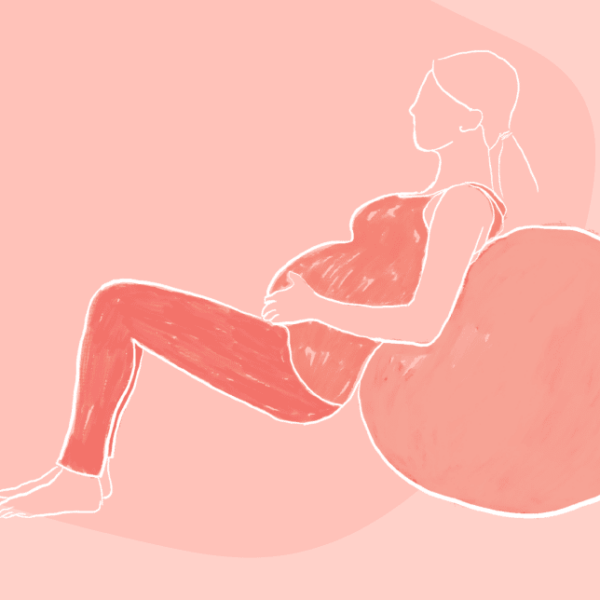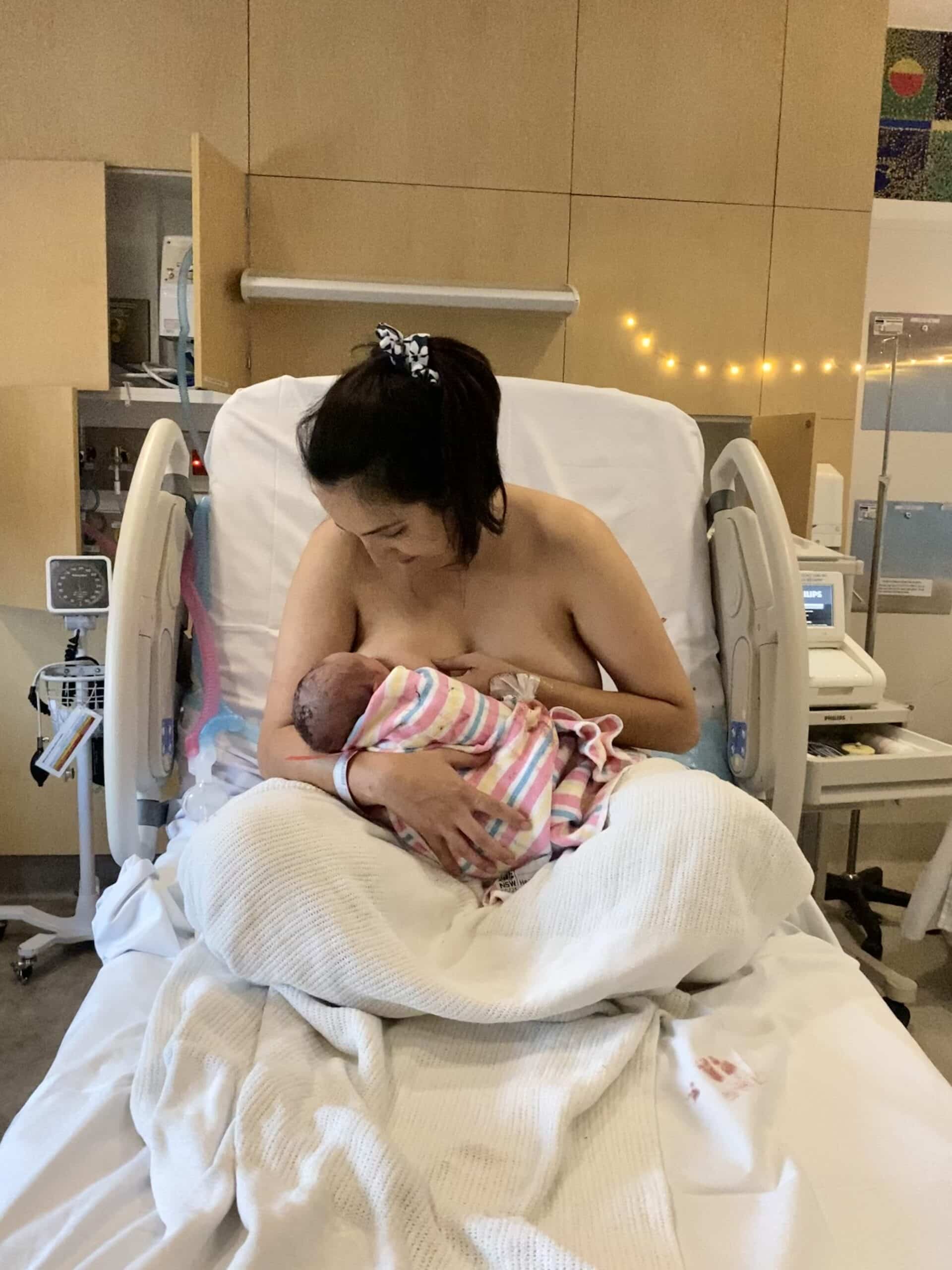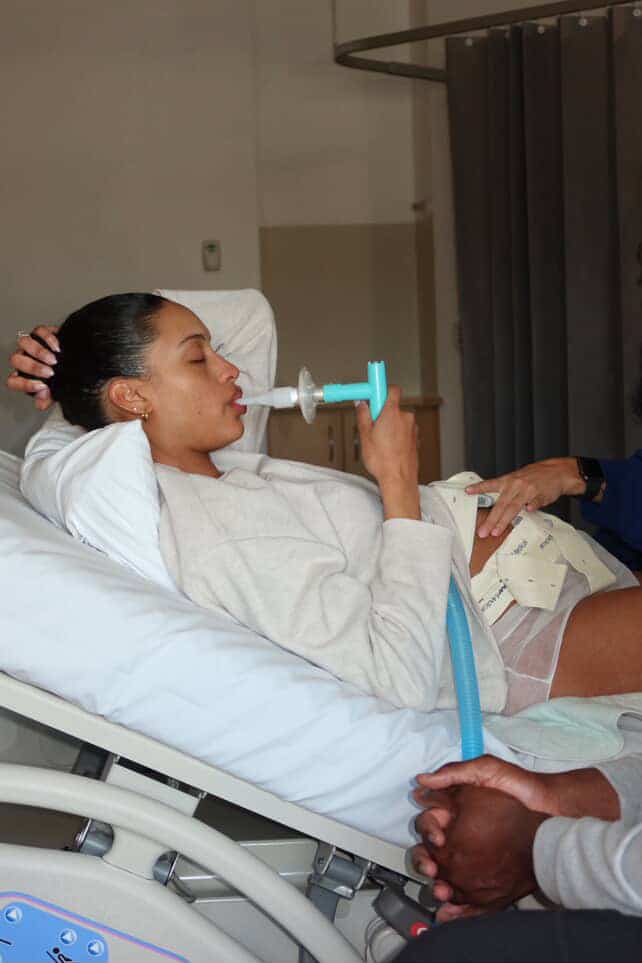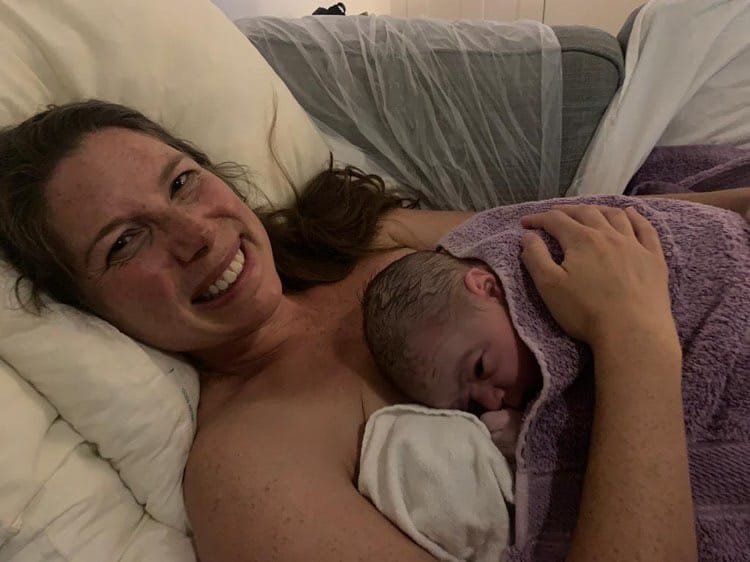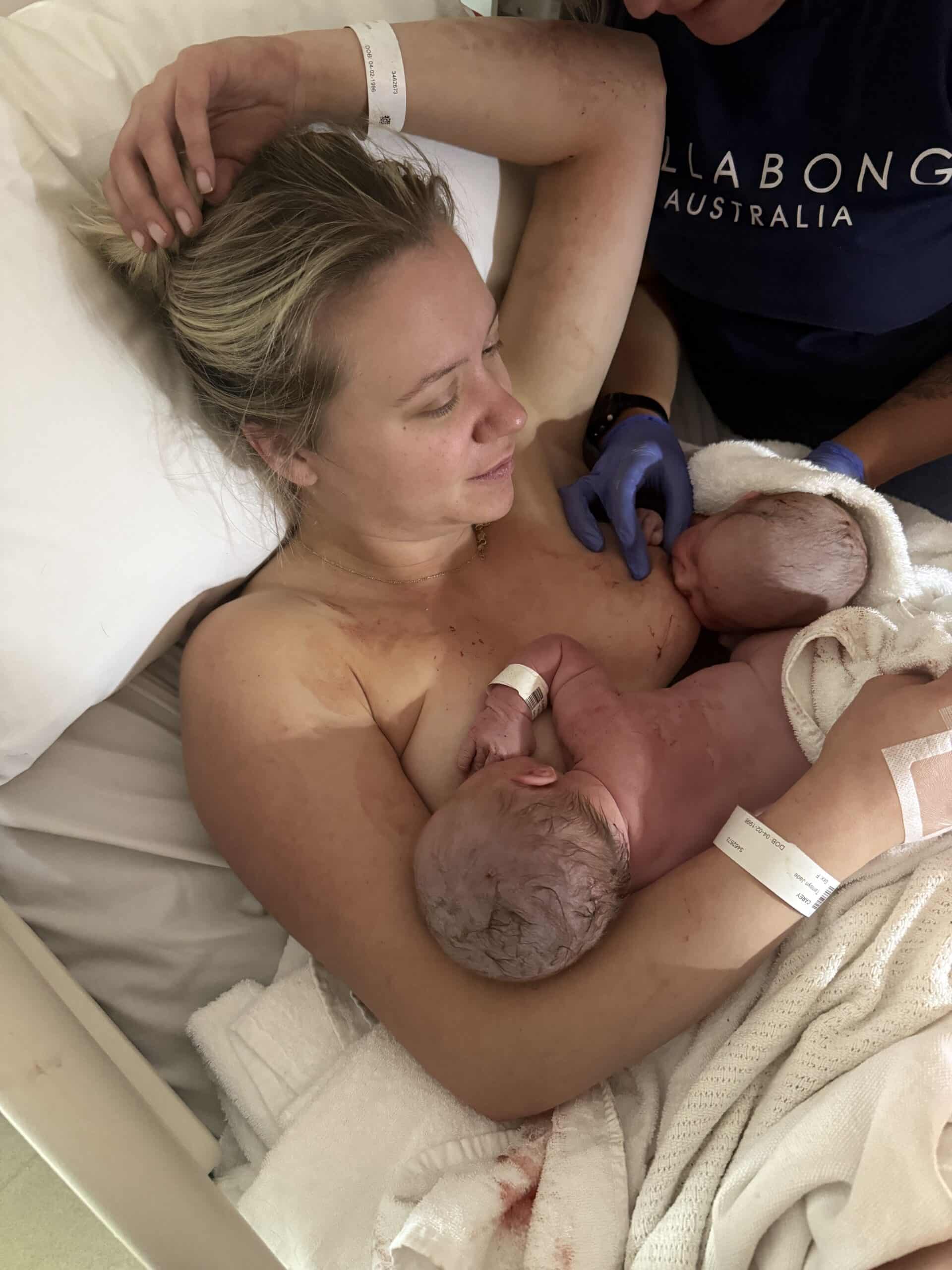Podcasts Meg
EPISODE 376
Meg

“I was 38 when I moved back to Adelaide from Sydney. I’d spent time with a psychologist talking about ambiguous loss and getting on with life knowing I probably wouldn’t have children. At 39 I met Reece. I was surprised by our connection but six months in we both agreed that we were ready to start a family. Age forced our hand in having those conversations quite early in our relationship…we had to make the decision early but we were both really excited about it.
“I oscillated between being very pessimistic and really hopeful. I had a regular cycle and I knew when I was ovulating so I had a good feeling of when we should try but I also didn’t know how fertile I was. I’d never had any insights into my fertility. We went into it very lightly because we didn’t want to create too much pressure. It was a huge relief but also quite surprising to find out we were pregnant three weeks after we started trying. I felt very lucky.
“I’d been present at my sister’s two births and a friend’s birth and they were all very different so I had a good idea of what I wanted. I was very keen to get into MGP at Flinder’s Hospital because I really wanted to have continuity of care with a known midwife. I had a particularly efficient midwife at my 12-week appointment who medicalised my pregnancy early on because I had had stage 1 cervical cancer years ago and I was 39 so she wanted me to have two glucose blood tests. I started advocating for myself and I think they just got sick of hearing from me because I got into MGP with my midwife, Jan, who was brilliant.
“I stayed low risk for my entire pregnancy; I felt energised, I didn’t have back problems. The main issue was that my baby was breech at 34 weeks so I went to a women’s health physio that a friend recommended and I started spinning babies to encourage her into the ideal birth position. She eventually turned which I was grateful for but I didn’t go into spontaneous labour and I was really attached to that. At 41 weeks I felt great physically but emotionally I was really challenged. There was no pressure to be induced but I was emotionally ready.
“I went in in the afternoon and they applied cervidil and at midnight I was listening to a podcast and contractions began. My waters had broken and were slowly leaking. My midwife, Jan, came in at about 5am and by the time she got to me I was fully dilated. I did most of it on my own; it was actually quite nice to know I was by myself…I found it quite special. It felt quite intense but I didn’t know I had progressed as far as I had.
“I wanted to have a vaginal examination when Jan arrived because I wanted to know how to pace myself. I was starting to feel the urge to push at about 6am and that’s where my crisis confidence came in. I pushed for two hours. At about the one-hour mark I was really having trouble; it was like Birdie couldn’t quite crown, I didn’t have enough to push her down and hold her there. I also had to decline CTG monitoring because I felt really comfortable with the doppler and that showed that Birdie was fine. I moved positions and I was lying on my back with my legs in stirrups and that was the best position for us, surprisingly. Jan noticed that Birdie’s heartrate was starting to drop. She told me I had one more contraction and then she would have to ask for assistance and perhaps that was the motivation I needed because I birthed her head and then she was born on the next contraction. She came straight onto my chest and it was an absolute high but also, I was so exhausted. I had a second-degree tear and unfortunately the surgeon came in but was called away and in the 45 minutes he was gone, I lost a lot of blood. I found it really hard to focus over the next 24 hours.
“Breastfeeding was really smooth for us and Birdie fed beautifully for 18 months. I got my first period shortly after her first birthday which prompted the discussion about having another baby and, again, we fell pregnant quickly. I got into MGP again and I had a different midwife but the same student midwife which was really special.
“You’d just released The Birth Class which was a beautiful refresher for Reece and I and he listened to it on the road as he was travelling a lot for work. At my 32 week appointment I had a debrief with my midwife for my first birth and she asked if I wanted direct and gentle guidance for that second stage. I felt very confident that whatever she suggested aligned with what we wanted.
“I finished work at 39 weeks and at 40 weeks I saw an obstetrician who didn’t put pressure on me for an induction but she checked me and I was already 3 cm. She asked if I wanted a stretch and sweep and I agreed to that and afterwards I really felt the pressure of the baby being so low. Days went by, I had another stretch and sweep, I was crampy and spotting and I’d lost my mucous plug. I felt like I was going to go any minute because I was so tired and yet we weren’t getting anywhere. At 41 weeks I had planned to go in and get my waters broken and I felt confident that labour would start promptly afterwards and I was right.
“My waters were broken at 10 am and then Reece and I went for a walk and went back to hospital at midday and I felt contractions. I listened to Jodi’s yoga nidra from The Birth Class and it helped calm me and Jess listened to me in a contraction and said: I think you’re going to have a baby soon. I lay on the bed with a peanut ball which was lovely for opening my hips and then soon after, my student midwife arrived. It was two hours until I started pushing.
“It felt so different this time; it wasn’t even a question of actively pushing, I couldn’t not push. It felt very instinctive. Both Jess and Taylor were using a warm compress and Jess was really guiding my pushing, really directing it so it wasn’t too fast. At one point she could see I was tearing along my scar tissue and she placed pressure there and managed that so I didn’t tear any further. My recovery was so much easier and I didn’t have any significant blood loss. Bleeding was on my mind so I chose to have the syntocinon injection for a managed third stage.
“As soon as Polly was on my chest she latched and it was strong. I was discharged the next day and so far, Polly has been really calm.”
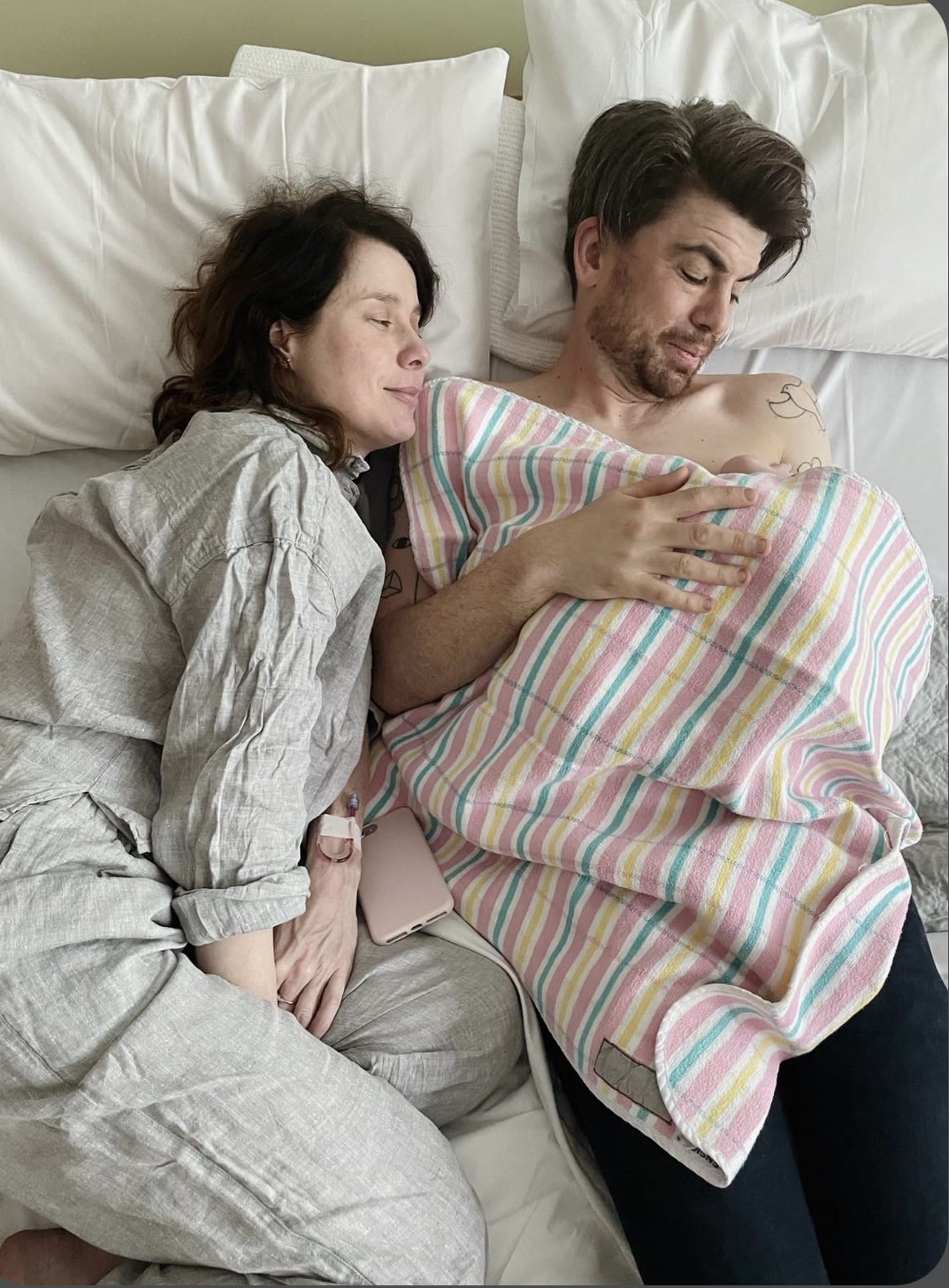
Topics Discussed
Advanced maternal age, Induction, MGP, Student midwife, The Birth Class, Two Babies
Episode Sponsor
This episode is brought to you by The Birth Class, my online childbirth education course.
Featuring 10 audio lessons with perinatal health specialists, you can listen from the comfort of your home when you’re relaxed and receptive to new information. The Birth Class is a conversation starter between you and your birth partner that informs, encourages and empowers you to journey towards labour with knowledge and confidence.
In The Birth Class you’ll be guided through every stage of labour and birth, including:
– the powerful role of your hormones to prompt contractions and moderate pain
– what to expect from each stage of labour; from the first contraction to birthing your baby and the placenta
– practical breathing and sound skills to help you navigate contractions and overwhelm
– the benefit of staying active in labour and how it can assist cervical dilation
– how optimal maternal positioning in late pregnancy can encourage your baby into an ideal birth position
– how to prepare for a successful vaginal birth after caesarean (VBAC)
– your pain-relief options, both non-pharmacological and pharmacological
– the risks and benefits of birth interventions and how they can help or hinder labour
– typical complications that lead to an emergency caesarean and what’s involved in the process
– what to expect in the hours after birth, including breastfeeding and blood loss
– breastfeeding advice to guide you through the fourth trimester with confidence.
– and so much more.
Learn more about The Birth Class here.
Categories
Related Products
-
The Birth Class
108 reviews$249.00The empowering online childbirth education program that will help you confidently prepare for birth.
Join the conversation
Sign up to get the latest updates, freebies, podcast releases straight into your inbox
@AustralianBirthStories
Follow along with us
@AustralianBirthStories
Follow along with us
@AustralianBirthStories
Follow along with us
@AustralianBirthStories
Follow along with us
@AustralianBirthStories
Follow along with us
@AustralianBirthStories
Follow along with us
@AustralianBirthStories
Follow along with us
@AustralianBirthStories
Follow along with us
@AustralianBirthStories
Follow along with us
@AustralianBirthStories
Follow along with us
@AustralianBirthStories
Follow along with us
@AustralianBirthStories
Follow along with us
